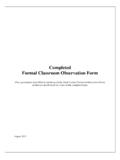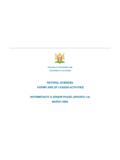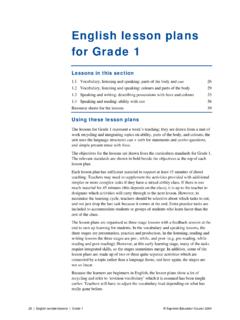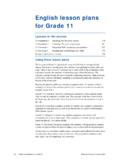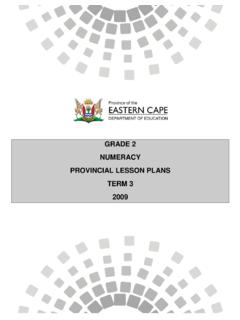Transcription of Moles Lab Activities - VDOE
1 Science Enhanced Scope and Sequence Chemistry Moles Lab Activities Strand Molar Relationships Topic Investigating stoichiometry Primary SOL The student will investigate and understand that chemical quantities are based on molar relationships. Key concepts include a) Avogadro's principle and molar volume;. b) stoichiometric relationships;. c) solution concentrations;. d) acid/base theory; strong electrolytes, weak electrolytes, and nonelectrolytes; dissociation and ionization; pH and pOH; and the titration process. Related SOL The student will investigate and understand that experiments in which variables are measured, analyzed, and evaluated produce observations and verifiable data.
2 Key concepts include a) designated laboratory techniques;. b) safe use of chemicals and equipment;. c) proper response to emergency situations;. g) mathematical manipulations including SI units, scientific notation, linear equations, graphing, ratio and proportion, significant digits, and dimensional analysis. Background Information The mole is the basic counting unit used in chemistry and is used to keep track of the amount of matter being measured or transferred. Performing calculations using molar relationships is essential to understanding chemistry.
3 Because of its importance, the concept of the mole, its value, and basic conversions should be introduced very early in the course and revisited often, ideally in every unit, in order for students to understand the concept completely and become proficient with its use. This lesson offers a wide variety of lab Activities in which students practice mole conversions at varying levels of difficulty. These conversions have applications to various content areas so that students can practice these concepts throughout a chemistry course, not just when studying stoichiometry.
4 The common theme of these Activities is to have students do simple lab measurements of various substances encountered in everyday life and then perform simple mole calculations and respond to conceptual questions related to the concept. If students approach the idea of the mole both conceptually and mathematically, then they will be able to handle the wide variety of problems that rely on the mole. The idea is to provide a solid conceptual and analytical understanding of the mole concept. Although the first activity is designed to give students a solid understanding of a counting unit and relative masses as a foundation for understanding the mole, students should be introduced to the quantity of the mole and its role as a counting unit before starting these Activities .
5 A review of Virginia Department of Education 2012 1. Science Enhanced Scope and Sequence Chemistry basic scientific notation and rules for significant figures is also recommended. The Activities start with conversions involving elements followed by compounds and then by simple reactions. Doing one or more Moles lab Activities in each unit you teach will give students plenty of practice and time to become proficient with all of the basic conversions and calculations. While these Activities could be done together in one discrete unit, it will prove more effective to students'.
6 Long-term retention to have them do these Activities throughout the course. Teacher notes for each activity are found in the list below. Among other things, these notes indicate the recommended unit in which the activity should take place and an estimated time for students to complete the work. Materials Moles Lab Activity 1: PCU (Popcorn Counting Units). Moles Lab Activity 2: Elements Aluminum, Elements Carbon, Elements Copper, Elements Iron, Elements Silicon, Elements Sodium Moles Lab Activity 3: Compounds Water, Compounds Sodium Chloride, Compounds Chalk Compounds The Fictitious Compound Cambium.
7 Moles Lab Activity 4: Solutions Aqueous Copper (II) Sulfate Pent hydrate, Solutions Alum Moles Lab Activity 5: Synthesis of an Oxide of Copper Moles Lab Activity 6: Single Replacement and Percent Yield Moles Lab Activity 7: Alka-Seltzer Moles Lab Activity 8: Conservation of Mass Reaction of Vinegar and Baking Soda Moles Lab Activity 9: Percent Water in a Hydrate Student/Teacher Actions (what students and teachers should be doing to facilitate learning). Procedure (Found on the attached lab activity sheets). Assessment Questions (Embedded in each lab activity).
8 Journal/Writing Prompts o Design and describe your own investigation related to a Moles lab activity. Other o Design your own Moles Lab Activity Sheets for other students to complete. This can be done experimentally, if time permits, or with mock data provided with the sheets. Submit a grading rubric for the activity. Extensions and Connections (for all students). (Listed with the various Moles lab Activities ). Strategies for Differentiation Have students color-code lab procedures and questions, using colored pencils/markers. Invite a local nutrition expert from a clinic, grocery store, or hospital to discuss the interpretation of nutritional labels.
9 Virginia Department of Education 2012 2. Science Enhanced Scope and Sequence Chemistry Have students work in groups to create a graph that illustrates the sodium content of snacks. Students can report findings orally or in a group report. Have students pick a favorite snack and, using the nutrition label, calculate the number of sodium atoms per serving. Have them share their findings in class. Provide a graph or table to record information. Pair students for this activity. It is important to consider students' abilities to complete the extensive written portion of this assignment.
10 Give students with written-language- skill deficits opportunities to record their observations in pictures or on a computer in order to focus on the observations themselves rather than on the written reporting of observations. Have students write the general equation for converting Moles to atoms and keep it in their vocabulary journals for reference. Teacher Notes for Moles Lab Activities Moles Lab Activity 1: PCU (Popcorn Counting Units). Time: Students will need 20 30 minutes to do initial calculations and collect data. Part 3 could be completed outside of class.









